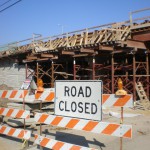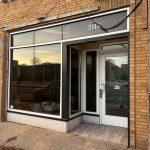Exploring the past, present and future with Historic Milwaukee
“Preservation is not about living in the past,” says Anna-Marie Opgenorth. “We want a better city. It’s about the future.”
As the Executive Director for the non-profit Historic Milwaukee, Inc, Opgenorth and a small but dedicated staff work to preserve distinct styles in different neighborhoods and a fluidity throughout the entire city. It’s not overly concerned with saving every possible structure, it’s more interested in helping those that will garner an economic or historic value to the community.
HMI has spent the last 30 years educating the public through its volunteer-driven tours, but recently the organization has been seeking to reconstruct itself into a more accessible hub for preservation advocacy. HMI essentially feeds on public participation to survive. With only herself, one other full-time employee and one intern, Opgenorth relies on a core of trained volunteers to spread their message, and becoming more accessible to the public is almost a necessity. Two-month tour guide training programs run every other year — the last one was this winter — and cost around $200.
While some people think creating a better city can only be accomplished through tearing down buildings and constructing new ones, HMI advocates that urban development can be achieved through rehabilitation, adaptive reuse, and heritage conservation — not demolition.
“Let’s say you have a building that doesn’t look like a historic treasure,” says Opgenorth. “A preservationist looks at that and can see the inherent value in the materials and the way it was built. Instead of wasting that by demolishing it, they leverage the economic, environmental, and cultural value and use it to have the end product be that much more valuable in the long run, rather than take value away … instead of a build-destroy-build-destroy cycle, we want to build transform build adapt manage and grow considerately for increased knowledge and measurable value – generation after generation.”
In May, Historic Milwaukee displayed some of the city’s most interesting buildings during its annual Spaces & Traces event. The 30th anniversary tour featured the Riverwest neighborhood. Tour guides led attendees through community houses and offered a seven-stop bar crawl, giving listeners historical and architectural perspectives on each structure or establishment.
Beginning tomorrow, HMI will launch a series of summer walking tours. Between June 11 and October 14, 2011, Milwaukeeans can tour historical neighborhoods like Yankee Hill and the Third Ward, gain a different view of Brady Street and East Town and even explore Downtown “through the eras.” From the fire of 1892 that decimated an early Irish neighborhood to the former Victorian mansions of Yankee settlers, the tours offer a glimpse into Milwaukee’s storied past and provide a historical context in which to understand how these neighborhoods became what they are today.
New this year, the organization is holding a two-day event called Doors Open Milwaukee. The concept, which began over in Europe in the mid ’80s, is to open 100 buildings to the public and allow them to see areas that are normally restricted.
“It’s not just historic buildings,” Opgenorth says. “It’s getting people in Downtown Milwaukee for the sole purpose of looking. Look at what’s around you, and go into spaces that you normally wouldn’t. It can completely change somebody’s perspective of the city.”
The Wisconsin Preservation Fund gave Historic Milwaukee a matching grant to fund the project — for every dollar donated until the end of June, the WPF will match up to $10,000. Doors Open Milwaukee runs Sept. 24-25, and Historic Milwaukee will offer passports that attendees can have stamped at each building and a phone app that can help map out your specific architectural desires.
Entry to each structure is completely free. Some will even feature special guest speakers, such as historians, media personalities, engineers and architects.
It’s all to get people excited about their city and see what they already have here, so they can do something about it before it’s gone.
“You have a right to determine what your environment is in the city you live in,” she says. “It doesn’t just happen. You can either let somebody else make the decision, or you can participate in the decision making.”
For Historic Milwaukee’s daily tour schedule and other events visit their website, www.historicmilwaukee.org. Cover image of St. Casimir Church by Drew Van Wyck.
























